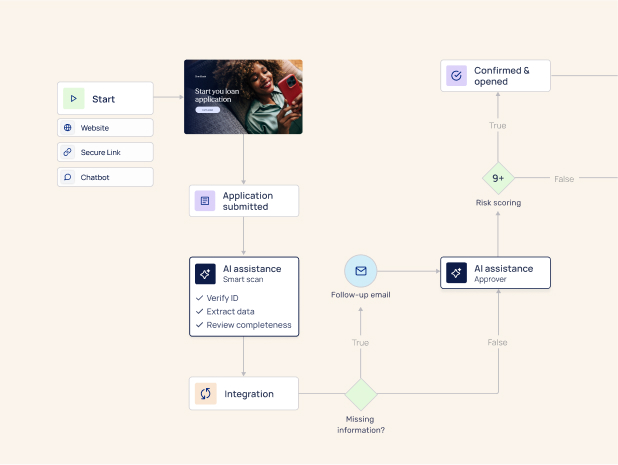After a boom in InsurTech investments leading up to 2021, there has been a cautious approach by investors in 2023, partly due to high-profile declines of several InsurTechs post-IPO. The investment is now more targeted, led by ecosystem players that support incumbents in the insurance sector.
The data showcases a mixed landscape for InsurTech investments in 2023 with certain quarters seeing a rebound in funding while others experiencing a decline. The overall trend seems to point towards a cautious approach in investments, especially in later-stage funding, despite some recovery from the lows of 2022:
- Funding for InsurTech increased by 37.6% quarter on quarter, rising from $1.01 billion in Q4 2022 to $1.39 billion (Gallagher Re Q1 2023 Report)
- The funding in Q1 2023 rebounded by 40% quarter-over-quarter to reach $1.4 billion, marking a recovery from a record low in 2022, although it was still the second-lowest quarter in the last four years (CB Insights)
- Global InsurTech funding experienced a decline of 34.0% quarter on quarter, dropping from $1.39 billion to $916.71 million. In the early-stage acceleration category, companies raised $134.49 million, accounting for 14.7% of the total InsurTech funding during this period. There were 43 corporate InsurTech investments from (re)insurers, with 34.9% directed towards US-based InsurTech (Gallagher Re Q2 2023 Report)
- A report from Q2 2023 highlighted a continued focus on early-stage acceleration (Series A) funding in the InsurTech sector, indicating a potential shift or emphasis on nurturing early-stage InsurTech firms Gallager Re

There has been a significant slowdown in funding across all product lines and operating models in the InsurTech sector, and there's no indication of a rebound. All growth stages saw a decline in funding, with the largest decrease observed in later-stage funding through Series C deals and beyond.
Yet, some areas within the InsurTech sector have seen exceptional growth, such as digital distribution, which witnessed a record-breaking $1.43 billion in new funding during Q2 2023 [Gallagher Re]. The areas of focus for InsurTech investment continue to be diverse, with property and casualty (P&C) insurance remaining the largest segment, followed by health and life insurance. New areas of opportunity are also emerging within the sector, such as cyber insurance, which saw a 35% increase in funding during Q2 2023.
The slowdown in overall funding within the InsurTech sector can be attributed to various factors, such as increased competition and a more cautious approach from investors. However, it is important to note that this does not indicate a lack of potential or opportunity within the industry. In fact, the areas of focus for InsurTech investment continue to expand and evolve, providing new opportunities for growth and innovation.
Generative AI
Generative AI is increasingly being integrated into the InsurTech stack to improve automation and streamline financial services operations, which in turn enhances efficiency and customer experience
Integration
One area of growth is the integration of technology within the insurance industry, which has been accelerated by the ongoing COVID-19 pandemic. InsurTech companies are utilizing advancements in artificial intelligence, machine learning, and data analytics to improve operational efficiency and customer experience. This trend is expected to continue as more insurers embrace digital transformation.
Embedded Customer Experience
There's a significant movement towards providing a seamlessly embedded customer experience by integrating InsurTech solutions directly into platforms, making it easier and more efficient for customers to interact with insurance services without needing to switch between apps or webpages.
Agent Channels
Recognizing the importance of agents in the insurance purchasing process, InsurTechs are focusing on leveraging technology to support and bring value to their agent partners, aiming to enhance the agents' ability to provide expert guidance and sell more policies efficiently.
Operational Efficiency and Profitability
InsurTechs are prioritizing lower loss ratios and tech-led efficiency to achieve profitability. The emphasis is on using AI and data analytics to improve underwriting, loss ratios, and risk assessment which will, in turn, help in reaching long-term profitability.
Despite the slowdown in investment, over 86% of insurers believe that cooperating with InsurTechs could bolster their technological development, which reflects a positive outlook towards collaborative projects between traditional insurers and InsurTech firms.
Although global InsurTech funding witnessed a dip, the M&A market in the InsurTech space picked up pace, indicating a possible shift in investment strategies.
These insights indicate a multifaceted approach in InsurTech investments focusing on technological advancements, enhanced customer and agent experiences, and operational efficiencies aimed at long-term profitability.
Here are the key takeaways:
- Early-stage acceleration (Series A) funding continues to be a focus in the InsurTech sector.
- All growth stages have seen a decline in funding, with the largest decrease observed in later-stage funding through Series C deals and beyond.
- Digital distribution has seen exceptional growth within the InsurTech sector, with a record-breaking $1.43 billion in new funding during Q2 2023.
- P&C insurance remains the largest segment for InsurTech investment, followed by health and life insurance.
- Cyber insurance is emerging as a new area of opportunity within the InsurTech sector, with a 35% increase in funding during Q2 2023. This is likely due to the increasing demand for cyber insurance as a result of the rise in cyber threats and data breaches.
- InsurTech companies are also focusing on partnerships and collaborations with traditional insurers, highlighting the potential for mutual benefits in terms of technological development.
The future of InsurTech investments looks promising, with a continued focus on leveraging technology to improve customer experiences and operational efficiency. As more traditional insurance companies embrace technology, there will likely be a further increase in partnerships and collaborations with InsurTech startups.
However, challenges remain in terms of regulatory barriers, data privacy concerns, and the need for continued innovation to stay ahead of the competition. It will be important for InsurTech companies to address these challenges as they continue to grow and disrupt the insurance industry.
In conclusion, while funding may have seen a decline in recent years, the InsurTech sector continues to show promising growth and potential for innovation. As technology advances and customer expectations evolve, we can expect to see more disruption and transformation in the insurance industry, led by InsurTech companies. It will be exciting to see how this sector evolves in the coming years and what new developments emerge.





